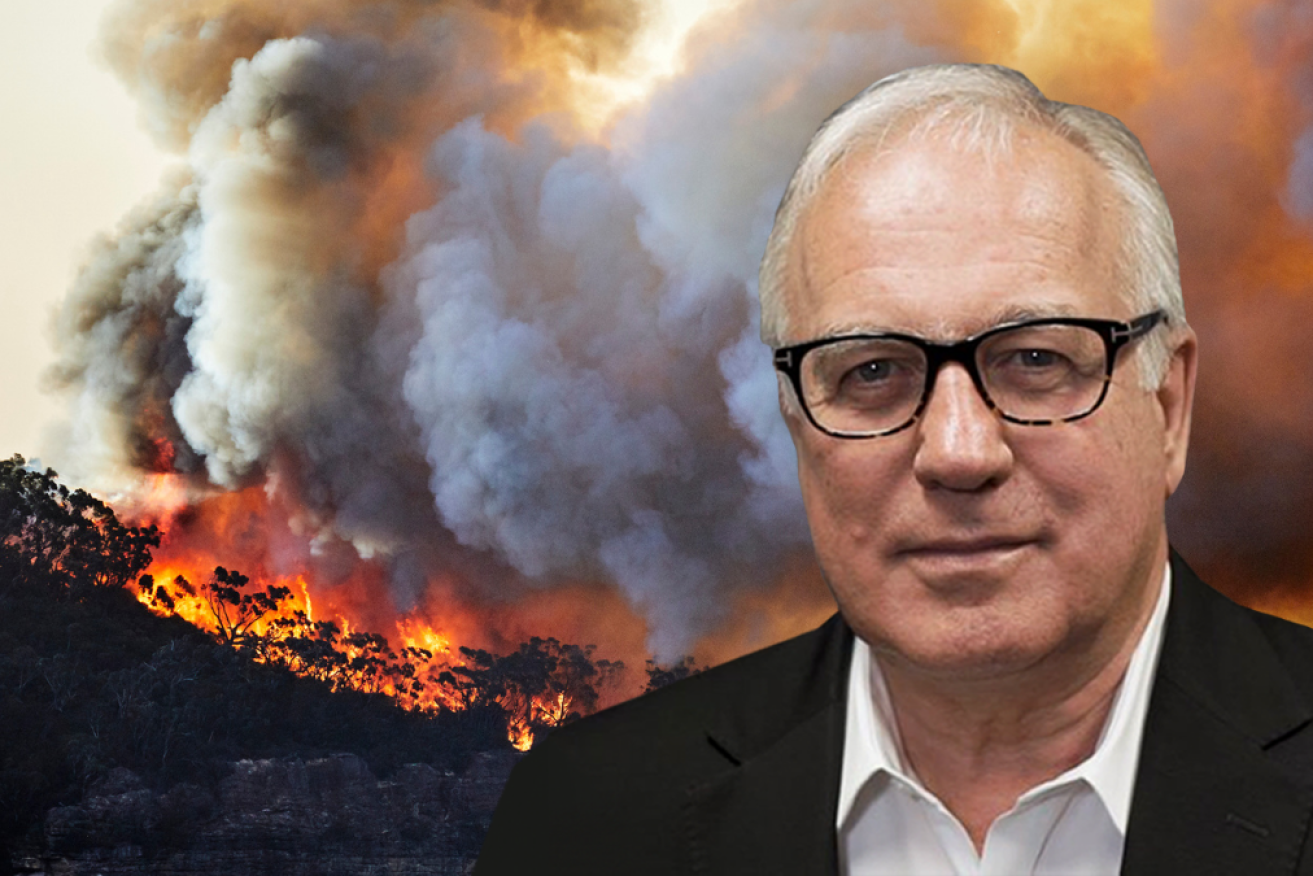Alan Kohler: Crises that weren’t, aren’t and never will be, plus one that really is heating up


There is a genuine crisis going on, turbo-charged this year by an El Nino, writes Alan Kohler.
For 18 months our hair has regularly been set alight by panics that have failed to live up to their early promise.
When Russia invaded Ukraine on February 24, 2022, there was a global panic about energy and food prices (to which your correspondent contributed enthusiastically, twice). But after an initial spike, the prices of wheat, oil, coal and gas have all been falling for close to 12 months.
That’s because, against dire predictions about sanctions on Russia and the siege of Ukraine, Russia’s energy exports have been rising, mainly to China and India, and Ukraine and Russia together have delivered 55 to 60 million tonnes of wheat into the global market at the same time as going at each other tooth and nail.
The energy and food shocks didn’t happen.
The inflation panic had started earlier (egged on, once again, by yours truly, even before Russia inflamed the inflation panic by invading Ukraine). Those saying that inflation was transitory, due to the temporary effect of the pandemic, were howled down. Central banks attacked, aggressively raising interest rates.
It was transitory. Global inflation has now been declining for six months, including in Australia.
The inflation monster
Is that because central banks have been aggressively raising interest rates for more than 12 months? Maybe, except that monetary policy always operates with a lag of about 12 months.
Then, this year, there was the US banking crisis, starting with the failure of Silicon Valley Bank on March 10. This was also going to bring forward the end of the world.
My contribution to that panic was to assert that the Fed had “broken something” and that rate hikes were finished. Wrong again. American banks are fine, and interest rates kept rising.
The dust had hardly settled on that panic, when we were panicking about a US debt default, as the Republicans in Congress stalled on raising the debt ceiling. It had been breached in January, and Treasury Secretary Janet Yellen warned that the US would run out of money the following week, default on its debts and cause global catastrophe.
Your correspondent didn’t exactly feed that crisis, but nor was I as sanguine as I might have been. A deal was done, of course, and there was no catastrophe.
Now America is consumed by the crisis of having the Republican frontrunner for next year’s presidential election indicted for espionage – which is really happening, amazingly – albeit now overshadowed by the President of Russia having been turned on by his mercenaries.
But not even America will vote for a president who is in jail, or likely to be. Surely not.
Safe as houses
In Australia we are now consumed, again, by a housing crisis, although it’s a choice of two – that the mortgage cliff will produce a flood of forced sales and a price crash, or that immigration will lead to shortage and a price rise.
Australia is the land of perpetual housing crisis because for the past 25 years the price of houses has risen at twice the rate of household incomes, which, as I wrote a year ago, “has not just reshaped the economy but fundamentally transformed society”.
That crisis is both real and bereft of short-term solutions, but the immediate questions before the house, as it were, are whether there will be a wave of defaults as a result of 12 rate hikes colliding with excessive household debt, and/or whether there will be a housing shortage because the burst of immigration needed to solve the labour shortage collides with the labour shortage in the construction industry.
As for the first of those, nobody knows what will happen because household debt has never been this high and there has never been this many people coming off cheap fixed-rate mortgages onto much higher variable rates.
But it is very difficult to see enough forced sales for a housing crash with unemployment under 5 per cent, let alone under 4 per cent as it is now.
People work multiple jobs to keep their homes, as I did in 1989, when interest rates went to 17.5 per cent, and 950,000 people are doing now. Even when unemployment hit 11 per cent in 1991 and we were lucky to hang onto one job let alone two, house prices only fell about 10 per cent.
There have only been two proper housing crashes – in 1892 and 1931, when unemployment hit 30 per cent both times.
It might end up being different this time, but so far so good – real estate listings have fallen this year, not risen, and are running 20 per cent below average. As a result, prices are rising again, having fallen 9 per cent last year.
Meanwhile, we are apparently about to have a housing shortage because construction will fall short of the demand from higher immigration.
It looks like about a million migrants will arrive over the next four years, which is one every couple of minutes. This year it’s one every 50 seconds. Seems like a lot.
The world’s broken thermostat
The current ratio of persons per household in Australia is 2.48, which would mean 400,000 houses required over four years. Even if few migrants cram into each dwelling – say, two per house, which is unlikely – we’re talking 500,000 dwellings needed, or 125,000 a year.
According to the Bureau of Statistics, last year’s dwelling commencements totalled 183,388 – well above the run rate required. It’s true that residential approvals have fallen this year, to about 12,000 a month, but that’s still 144,000 a year – more than enough, even if not all of the approvals turn into houses.
And then there’s the 36,000 or so low-income houses and flats that the federal government will pay for through the $2 billion grant to the states and the Housing Australia Future Fund (if it ever gets through the Senate).
So it looks to me like there will be neither a shortage nor a surplus.
I’d like to conclude this cheerful column with a reminder that there is a genuine crisis going on; global warming, which will be turbo-charged this year by an El Nino. The global temperature has already spiked above the 1.5 degrees Paris target, and that happened after three consecutive years of La Nina.
The US National Oceanic and Atmospheric Administration puts the probability of an El Nino this year at more than 90 per cent. And most predictions are that it’s going to be a big one, perhaps the biggest yet.
That means it’s going to be a blazing hot, very dry summer. The housing crisis in Australia this year will be about them burning.
Alan Kohler is founder of Eureka Report and finance presenter on ABC news. He writes twice a week for The New Daily








